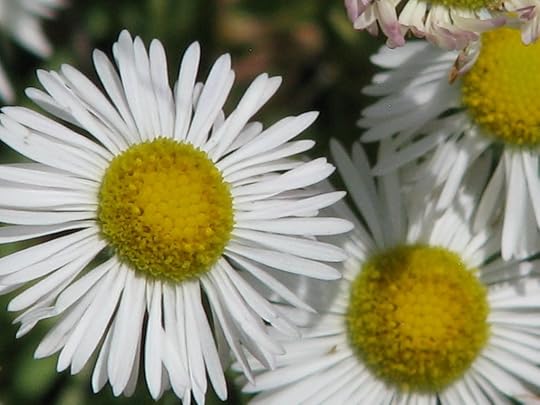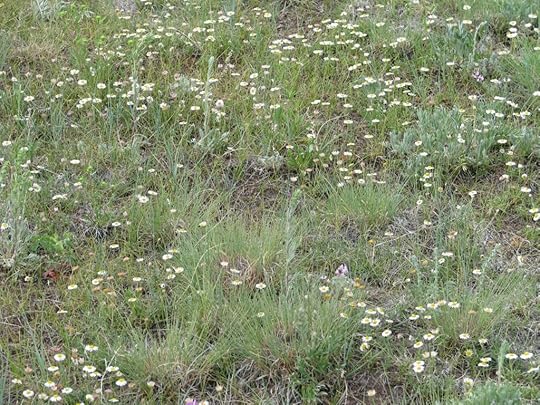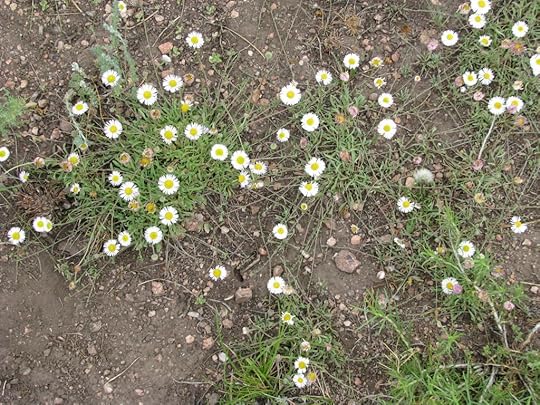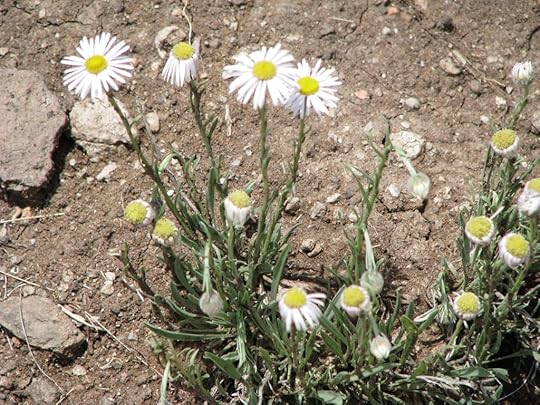Fleabanes and the Like
Another one of those large flower groups that prove troublesome to those of us who haven’t learned to key out plants.
These are some of the first flowers we see in spring, but like so many of the native plants, they know how to take advantage of precipitation; our May and early June snowstorms encouraged them to keep blooming.
All pictured here have dime-sized flowers, and in places they are flowering with great enthusiasm.
The most common fleabane up here enthusiastically throws runners across bare ground.
The plants above are exercising their spreading habit near one of the gates in the horse pasture, where we’ve been mowing to deter a mixed population of kochia and lamb’s quarters. We use the string trimmer to selectively hit the weeds when they’re six or seven inches tall, leaving other plants to set seed. Both kochia and lamb’s quarters are annuals, so pulling them would be the ideal method, and I do that too, but since this is in an area we see on a daily basis, we can hammer the whole population in a few minutes as needed, minimizing how much these weeds re-seed. They are steadily losing ground as the native plants and grasses move back in: what was a sacrifice zone in the pasture is recovering. Those little runners are very talented at catching grass seed, which helps the re-vegetation process, too.
A different species forms discrete clumps:







